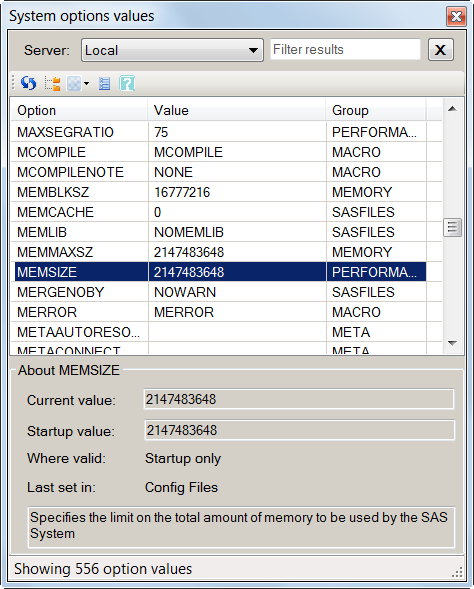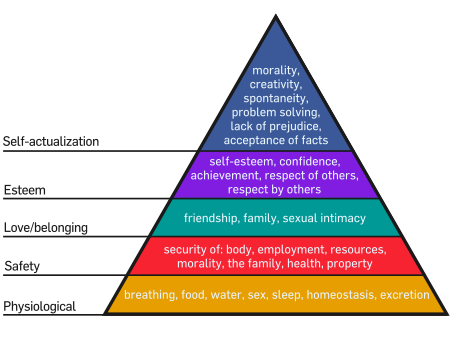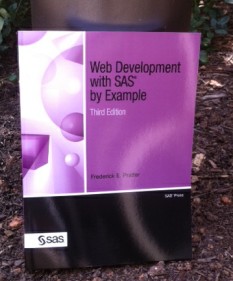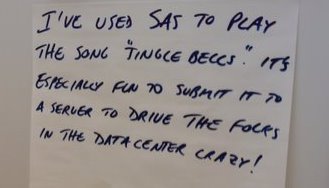All Posts

On the heels of the release of the popular SAS macro variable viewer from last month, I'm providing another custom task that I hope will prove just as useful. This one is a SAS options viewer, similar in concept to the OPTIONS window in SAS display manager. You can download

From the largest corporation to a small startup, data overload can be a crippling problem. Just ask this big guy ... Now you know. Happy holidays!
A new book from SAS Press, "Statistical Graphics Procedures by Example" co-authored by Dan Heath and I has now been published (phew!). For both Dan and I, this was our first foray into writing a book, so it was highly educational to say the least. The key idea behind the presentation

After my November blog post about achievement gaps between affluent and poor students, Newt Gingrich cast some renewed energy on the topic with his inflammatory comments about poor children at a Dec 1st GOP debate. In case you missed his remarks, here is the quote that sent the media into
Charlie Huang recently posted an article on a new way to draw maps using SGPlot procedure. The basic idea is simple, just use the SCATTER statement to plot the (x, y) points from the data sets in the MAPS library. The GROUP option can be used to color the markers for each

SAS Press prides itself on being a place where users come to help other users. Collaboration is key here—not just between authors and the SAS Press team, but among authors alike. So we asked two of our authors, one experienced and one currently working on his first book, to share

Since joining SAS, I no longer run screaming from social media, blogs, etc. In fact, I embrace exploring different mediums to highlight how SAS is assisting today’s law enforcement. To that end, and in recognition that sometimes less is more, I give you this short intro. SAS continues to push

The holiday season has just begun here in Cary, North Carolina. My favorite holiday is Christmas, but your's may be another. I'll try to outline some of the ones that are celebrated here and for some of my other global readers - I may miss an important holiday when I try
Calendar Heatmaps are an interesting alternative view of time-series data. The measured value is displayed as color mapped cells in a calendar. Calendar Heatmaps can be easily created with SAS 9.3 using just the HEATMAPPARM, SERIESPLOT and BLOCKPLOT statements in GTL and some simple data manipulation. The example below shows

In one minute (and 10 seconds, but are you measuring that?) you can add a custom measure (also known as calculated members) to your OLAP cube. Watch this video to create a simple calculation multiplying units * price. Remember that this mechanism is not just used for multiplications, you can

“Do you really serve M&Ms every Wednesday? Tell us the story!” clamored a wide-eyed class after sampling the M&Ms lighting up the breakout area. Seeing how hard they worked on their exercises, it seemed ok to have a slight diversion from technology. Besides as you’ll find out, the story has
When viewing time series data, often we only want to see the trend in the data over time and we are not so concerned about the actual data values. With multiple time series plots, forecasting software can find clusters to help us view series with similar trends. Recently I saw a graph showing the trend of unemployment

Water and wastewater treatment plants are among the most complex facilities built and maintained by utility companies, whether public or private. Each facility contains thousands of pieces of equipment worth millions of dollars that must operate in concert for the many complex treatment processes to function effectively. The consequences of these assets

Consultant Frederick Pratter continues his winning streak with this third edition of Web Development with SAS by Example. Web programmers of all levels will appreciate Frederick's many real-world examples and clean delivery. Speaking of delivery, I'd encourage those of you who attend SAS Global Forum and regional user group conferences to seek out Frederick if

It's the holiday season again in the US. Every December, many of us break out the holly, mistletoe, fir and SAS software to ring in the Christmas spirit. What's that? Do you mean to tell me that you don't use the world's leading business analytics software to play Jingle Bells! Well,









